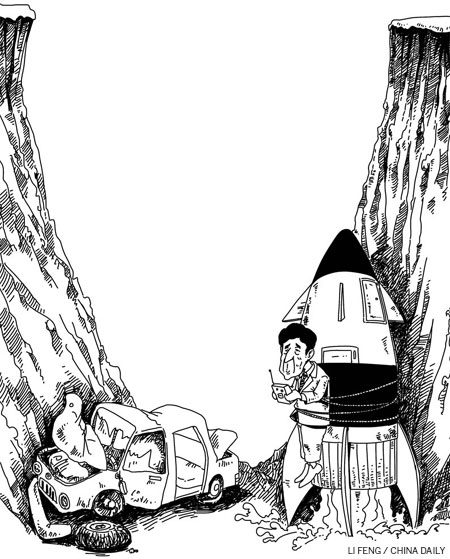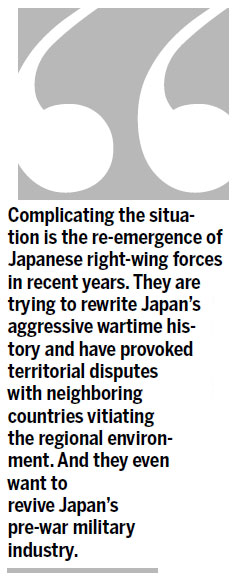Japan arms its way out of crisis


Since assuming office in December, Japanese Prime Minister Shinzo Abe has been trying desperately to pull the country's economy out of its long-drawn deflation to consolidate his Liberal Democratic Party's position in parliament. Inspired by the United States' quantitative easing (QE) policy, Abe has introduced an economic policy consisting of "three arrows" - an aggressive monetary policy, massive fiscal stimulus and structural reforms - which economists have labeled "Abenomics".
But even after firing the first "two arrows", Abe has been achieved little.
As rumors of the US ending QE3 began in May, it triggered turbulence in the global financial market and Japan's stock market began slumped. On June 13, it plunged 6.35 percent, the biggest fall since the devastating 2011 earthquake and tsunami, with Nikkei 225 closing at 12,445.38 points. And even after Abe fired the "third arrow" of structural reforms on June 14, the stock market has not recovered.















